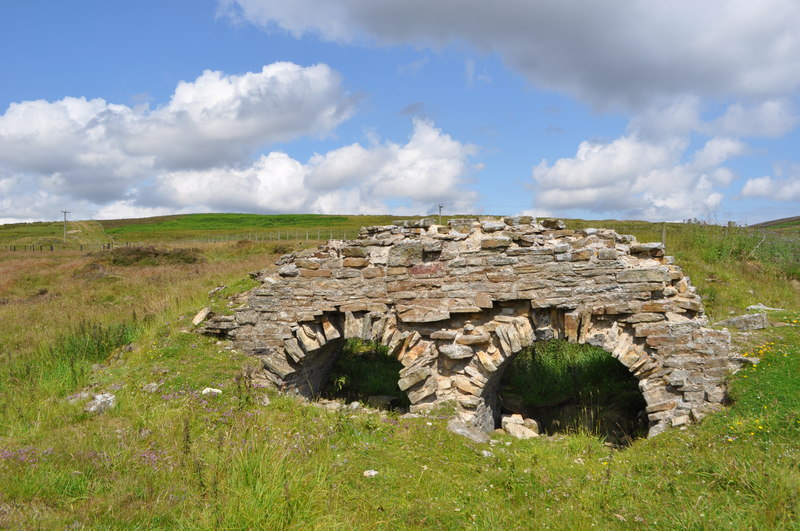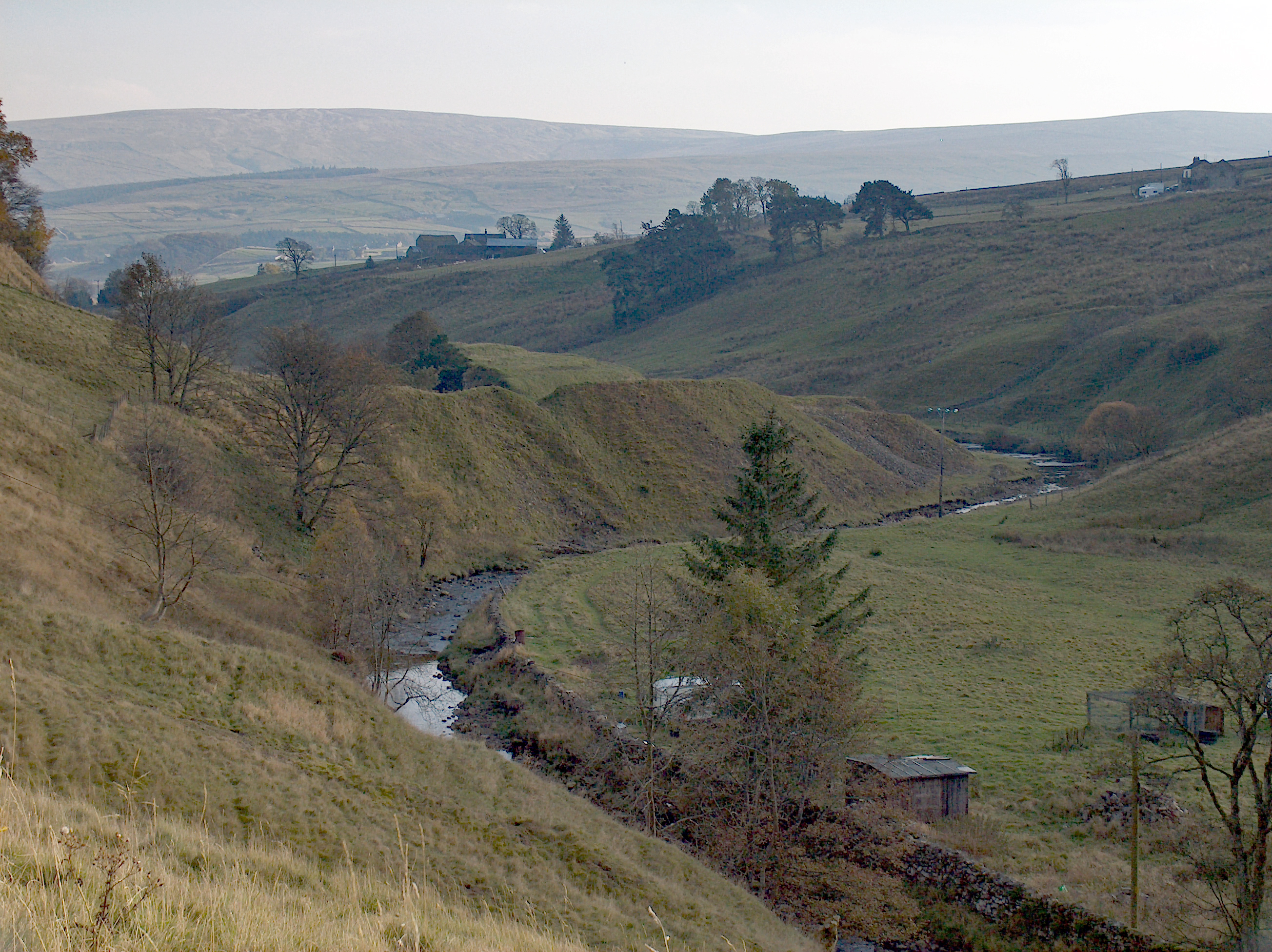|
Rookhope
Rookhope is a village in the civil parish of Stanhope, in County Durham, England. A former lead and fluorspar mining community, it first existed as a group of cattle farms in the 13th Century. It is situated in the Pennines to the north of Weardale. W. H. Auden once called Rookhope "the most wonderfully desolate of all the dales". In the 2001 census Rookhope had a population of 267. The village had two public houses, the Rookhope Inn and the Swallow's Rest on the fell surrounding Rookhope but now closed (May 2022), both popular with cyclists on the coast to coast cycling route which runs from Sunderland on the east coast to Whitehaven or Workington on the West Cumbrian coast of northern England. The village had a primary school but it was closed in 2024 due to falling pupil numbers. Travelling by road, Rookhope is to the west of Durham, to the west of Newcastle upon Tyne, to the north west of Middlesbrough and to the east of Carlisle. Mining Rookhope was once the ce ... [...More Info...] [...Related Items...] OR: [Wikipedia] [Google] [Baidu] |
Weardale
Weardale is a dale, or valley, on the east side of the Pennines in County Durham, England. Large parts of Weardale fall within the North Pennines Area of Outstanding Natural Beauty (AONB) – the second-largest AONB in England and Wales. The upper dale is surrounded by high fells (up to O.D. at Burnhope Seat) and heather grouse moors. The River Wear flows through Weardale before reaching Bishop Auckland and then Durham, meeting the sea at Sunderland. The Wear Valley local government district covered the upper part of the dale, including Weardale, between 1974 and 2009, when it was abolished on County Durham's becoming a unitary authority. (From 1894 to 1974 there was a Weardale Rural District.) Upper Weardale is in the parliamentary constituency of North West Durham. The dale's principal settlements include St John's Chapel and the towns of Crook, Stanhope and Wolsingham. Local climate Weardale's winters are typically harsh and prolonged with regular snow, nowadays ... [...More Info...] [...Related Items...] OR: [Wikipedia] [Google] [Baidu] |
Stanhope, County Durham
Stanhope is a market town and civil parish in the County Durham district, in the ceremonial county of Durham, England. It lies on the River Wear between Eastgate and Frosterley, in the north-east of Weardale. The main A689 road over the Pennines is crossed by the B6278 between Barnard Castle and Shotley Bridge. In 2001 Stanhope had a population of 1,633, in 2019 an estimate of 1,627, and a figure of 1,602 in the 2011 census for the ONS built-up-area which includes Crawleyside. In 2011 the parish population was 4,581. Governance Stanhope parish is the largest parish area in England, at It has some land in common with the neighbouring Wolsingham civil parish. If Stanhope was a district it would be the 135th largest in England and would be 94th if only counting districts that are 2 tier thus excluding unitary authorities and similar, 2 ceremonial counties namely the City of London and Bristol cover a smaller area. On 31 December 1894 "Stanhope Urban" parish was formed ... [...More Info...] [...Related Items...] OR: [Wikipedia] [Google] [Baidu] |
Sea To Sea Cycle Route
The Coast to Coast or Sea to Sea Cycle Route (C2C) is a cycle route opened in 1994. Combining sections of National Cycle Route 7, 14, 71 and 72; it runs from Whitehaven or Workington on the west coast of Cumbria, and then crosses the Lake District and the Pennines in the north of England by using a variety of both on and off-road trails, ending on the north-east coast in Tyne and Wear at Sunderland or Tynemouth. Sustrans state that it is the UK's most popular challenge cycle route, it is designed for the whole range of cyclists, from families to cycling club riders. Although a challenge with some hard climbsthe highest point being over the C2C is completed by an average of between 12,800 and 15,000 cyclists every year. History The C2C is part of the UK National Cycle Network (NCN), and was developed by Sustrans in partnership with various local authorities, Groundwork West Cumbria, North Pennines Tourism Partnership, Forest Enterprise and the Lake District Nation ... [...More Info...] [...Related Items...] OR: [Wikipedia] [Google] [Baidu] |
Middlesbrough
Middlesbrough ( ), colloquially known as Boro, is a port town in the Borough of Middlesbrough, North Yorkshire, England. Lying to the south of the River Tees, Middlesbrough forms part of the Teesside Built up area, built-up area and the Tees Valley. History Monks and lords Middlesbrough started as a Benedictine priory on the south bank of the River Tees, its name possibly derived from it being midway between the holy sites of Durham, England, Durham and Whitby. The earliest recorded form of Middlesbrough's name is "Mydilsburgh". Some believe the name means 'middle fortress', since it was midway between the two religious houses of Durham and Whitby; others state that it is an Old English personal name (''Midele'' or ''Myhailf'') combined with ''burgh'', meaning town. In 686 a monastic cell was consecrated by Cuthbert of Lindisfarne, St Cuthbert at the request of Hilda of Whitby, St Hilda, Abbess of Whitby. The cell evolved into Middlesbrough Priory. The manor of Middlesburgh ... [...More Info...] [...Related Items...] OR: [Wikipedia] [Google] [Baidu] |
Tynedale
__NOTOC__ Tynedale was a local government district in Northumberland, England. The district had a resident population of 58,808 according to the 2001 census. The main towns were Hexham, Haltwhistle and Prudhoe. The district contained part of Hadrian's Wall and the southern part of Northumberland National Park. With an area of it was the largest English district created in 1974 and remained so until 1996 when it was superseded by the East Riding of Yorkshire. It was bigger than several English counties, including Nottinghamshire, Leicestershire and Hertfordshire. It was also the second-least densely populated district (behind Eden, Cumbria). The district was formed on 1 April 1974, under the Local Government Act 1972, and was a merger of Hexham and Prudhoe urban districts, along with Bellingham, Haltwhistle and Hexham rural districts. Tynedale was historically a liberty created alongside the county of Hexhamshire by Henry I of England. The district was abolished as par ... [...More Info...] [...Related Items...] OR: [Wikipedia] [Google] [Baidu] |
Joseph Ritson
Joseph Ritson (2 October 1752 – 23 September 1803) was an English Antiquarian, antiquary known for editing the first scholarly collection of Robin Hood ballads (1795). After a visit to France in 1791, he became a staunch supporter of the ideals of the French Revolution. He was also an influential vegetarianism activist.Spencer, Colin. (1995). ''The Heretic's Feast: A History of Vegetarianism''. University Press of New England. pp. 233-234. Ritson is also known for his collections of English nursery rhymes, such as "Roses Are Red" and "Little Bo-Peep", in ''Gammer Gurton's Garland or The Nursery Parnassus'', published in London by Joseph Johnson (publisher), Joseph Johnson. Life and work Early life Ritson was born in Stockton-on-Tees, County Durham, of a Westmorland yeoman family. He was educated for the law, mainly by Ralph Bradley (barrister), Ralph Bradley the leading conveyancer. He then settled in London as a conveyancer at 22. Writing career Ritson devoted his sp ... [...More Info...] [...Related Items...] OR: [Wikipedia] [Google] [Baidu] |
Border Ballad
Border ballads are a group of songs in the long tradition of balladry collected from the Anglo-Scottish border. Like all traditional ballads, they were traditionally sung unaccompanied. There may be a repeating motif, but there is no "chorus" as in most popular songs. The supernatural is a common theme in border ballads, as are recountings of raids and battles. Ballad types The ballads belong to various groups of subjects, such as riding ballads like "Kinmont Willie"; historical ballads like " Sir Patrick Spens"; comic ballads like " Get Up and Bar the Door";''About this book'' - inside front cover of and those with supernatural themes including "Thomas the Rhymer" (also known as "True Thomas" or "Thomas of Erceldoune") and "Tam Lin". Writings about Some of the earliest known references (in Middle Scots) to the ballads appeared in '' The Complaynt of Scotland'' (1549). Sir Walter Scott wrote about border ballads in ''Minstrelsy of the Scottish Border'', first published in 1802 ... [...More Info...] [...Related Items...] OR: [Wikipedia] [Google] [Baidu] |
Parish Councils In England
A parish council is a civil local authority found in England, which is the lowest tier of Local government in England, local government. Parish councils are elected corporate bodies, with variable tax raising powers, and they carry out beneficial public activities in geographical areas known as civil parishes. There are about 10,480 parish and town councils in England. Parish councils may be known by different #Alternative styles, styles, they may resolve to call themselves a town council, village council, community council, neighbourhood council, or if the parish has city status in the United Kingdom, city status, it may call itself a city council. However their powers and duties are the same whatever name they carry.Local Government and Public Involvement in Health Act 2007 Parish councils receive the majority of their funding by levying a Local government in England#Precepting authorities, precept upon the council tax paid by the residents of the parish (or parishes) covered ... [...More Info...] [...Related Items...] OR: [Wikipedia] [Google] [Baidu] |
Durham County Council
Durham County Council is the Local government in England, local authority for the non-metropolitan county of County Durham (district), County Durham in North East England. The council is a Unitary authorities of England, unitary authority, being a non-metropolitan county council which also performs the functions of a non-metropolitan district council. It has its headquarters at County Hall, Durham, County Hall in Durham, England, Durham. Until 1 May 2025 the council had been under no overall control since the 2021 Durham County Council election, 2021 election, being run by a coalition of the Conservative Party (UK), Conservatives, Liberal Democrats (UK), Liberal Democrats, Derwentside Independents, Green Party of England and Wales, Green Party, and most of the Independent politician, independents, led by Liberal Democrat councillor Amanda Hopgood. It had previously been under the control of the Labour Party (UK), Labour Party continuously since 1925. On 1 May 2025 the Council c ... [...More Info...] [...Related Items...] OR: [Wikipedia] [Google] [Baidu] |
Richard Holden (British Politician)
Richard John Holden (born 11 March 1985) is a British politician who has been the Member of Parliament (MP) for Basildon and Billericay and Shadow Paymaster General since 2024. A member of the Conservative party, he was previously the Member of Parliament for North West Durham from 2019 to 2024. Holden served as the Chairman of the Conservative Party and Minister without Portfolio from November 2023 to July 2024, and as Parliamentary Under Secretary of State for Roads and Local Transport from 2022 to 2023. Early life and political career Richard Holden was born on 11 March 1985 in Blackburn to Mark and Joan Holden. He grew up in Grindleton, a village in the Ribble Valley, and attended Grindleton Primary School, Ermysted's Grammar School in Skipton and Queen Elizabeth's Grammar School in Blackburn. He then went to St Mary's College in Blackburn, before studying at the London School of Economics, graduating with a BSc in Government and History in 2007. Holden was employed ... [...More Info...] [...Related Items...] OR: [Wikipedia] [Google] [Baidu] |



